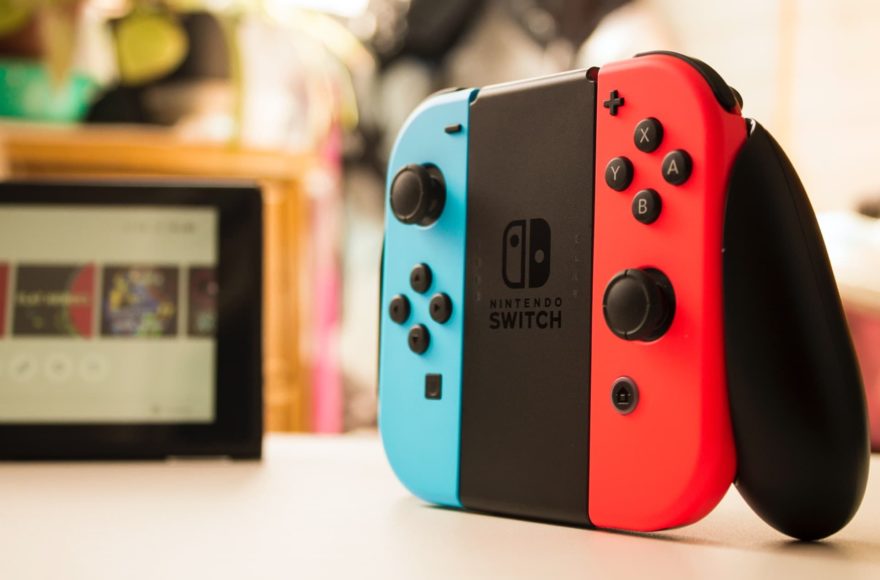The Xbox Series X master plan

As Microsoft prepares to launch its next-generation Xbox Series X console, the company is ready for its most ambitious foray into gaming. But it’s not just about the console.
As well as introducing a powerful new piece of hardware, the company is embarking on a spectrum of distributive innovations that mirror profound transformations in the way games are bought, distributed, and played. These encompass subscription services like Xbox Game Pass as well as the in-development Project xCloud.
All this is a lot, much of it seemingly contradictory. On the one hand, Microsoft wants to carry on selling incrementally better consumer electronics devices, backed by $60 software purchases. On the other hand, it’s also interested in running a Netflix-style buffet service, and a cloud-based game streaming service that may not even require ownership of an Xbox.
Through Xbox All Access, Microsoft is even trialing a mobile phone-style subscription service that includes the console and an inherent upgrade path.
As a piece of hardware, the Xbox Series X is a significant technological step up from the Xbox One, but the central point of its introduction has little to do with sharper-looking games and faster loading times. This generation is going to be transformative in terms of how people play, rather than what they play.
In interviews with leading analysts, we’ve tried to piece together Microsoft’s current thinking about gaming in the next decade, and how the company is approaching the Xbox Series X — not merely as a new console, but as a component of a much wider attempt to broaden the company’s appeal in gaming.
Digging into executive interviews, and the views of those analysts who spend time with Microsoft decision-makers, it’s clear that the company sees this generation as a series of bets designed to secure its position in the traditional console sector, while defending itself from aggressive new competitors likely to make use of the cloud as a distributive platform — companies like Amazon and Google.
Microsoft recognizes that it has power in the form of brand loyalists, and in its ability to produce showpiece video games. But it’s also aware that a new generation of players is growing up, a cohort for whom mobility, convenience, and connectivity are more important than fidelity and power.
Put another way, the Xbox Series X is Microsoft hedging its bets on gaming’s future.
The Spencer doctrine
:no_upscale()/cdn.vox-cdn.com/uploads/chorus_asset/file/10271717/xbox_gamescom_briefing_2015_phil_spencer_xbox_jpg.jpg)
In recent interviews, Xbox chief Phil Spencer has offered a few clues to the company’s current thinking. Speaking on the Academy of Interactive Arts and Sciences podcast to Insomniac Games head Ted Price, Spencer made three arguments that point clearly toward Microsoft’s current thinking. His three points are notable, because although they are not mutually exclusive views of the future, they are inherently contradictory.
Polygon requested an interview with Spencer for this article, or with any senior Xbox executive, but we were refused.
A move away from a device-centric strategy.
Spencer said that Microsoft wants to “liberate content from one specific device,” and used the world’s most popular games to illustrate his point. “When you ask, ‘What device is Fortnite played on?’ the answer is kind of … ‘Yes.’ Our own Minecraft is played everywhere.” He added that playing across devices is “something we’re spending a lot of time on inside Microsoft,” making specific reference to touch controls for games originally designed for controllers. He added: “How can people play [Xbox games] when they don’t have an Xbox or a PC? We have a lot of room to go in that space, and that’s where our focus is.”
A continued commitment to console boxes.
Despite this embrace of a multidevice future, presumably driven by cloud-based virtual distribution, Microsoft is still in the business of selling hardware. “I think I’m going to have a game console plugged into my television for the next decade-plus,” he said. “It’s going to be the best way for me to play on my television, to download and play on a native device. But sometimes I’m not in front of my television … and that’s our bet on the cloud.”
A definitive belief in subscriptions, with certain caveats.
“Game Pass as a business works today and will definitely work as it continues to grow,” said Spencer. He argued that subscriptions foster experimentation: “The incremental cost of clicking on the next game is zero.” But he does not believe that the future of gaming is entirely subscription-based. “Our view is that there’s not one business model to rule them all,” he said, adding that the game industry should “embrace monetization dexterity.”
Analysts and the big picture
Analysts advise investors, and so are often afforded high levels of access to companies. Corporations make use of analysts as litmus tests for new ideas and risky strategies. Analysts take informal lunches with CEOs in which off-the-record conversations are used to reassure investors, outside the constraints of official statements. Journalists rarely get this kind of access.
“Like all the console companies, Microsoft realizes there is a ceiling to the audience for buying a relatively expensive device to play games on,” says Piers Harding-Rolls, research director at Ampere Analysis. “So they’re changing their strategy from one of trying to sell more boxes, to a strategy where they are leveraging off the core Xbox products to sell content and services in a more horizontal fashion. People want to consume games, but not necessarily through consoles.”
Michael Pachter, gaming’s lead analyst at Wedbush Securities, has an even more stark prediction. “I think that both Microsoft and Sony recognize that their days as gaming juggernauts are numbered.”
“Combined, the console manufacturers sell about 250 million consoles every generation,” Pachter says. “That’s probably to about 150 million people, because a lot of people buy more than one device. Throw in maybe 100 million real gaming PCs, and that’s the market.”
Pachter sees much more growth in subscriptions and cloud streaming. But these opportunities also attract large new competitors, like Google and Amazon.
“The addressable market for the streaming industry is anybody with an internet connection, which is, say, 2.5 billion people,” Pachter says. “That includes your mom who doesn’t play games, but it also includes the guys you went to high school with, who want to play Madden every now and again, but not so much that they’d buy a console. But if all they have to do is sign up for a cloud subscription, then boom.”
He says Microsoft is “extraordinarily well-positioned” because it’s a provider of cloud technologies, while also holding brand equity and content in gaming. “Google is already here, even though it’s executing badly [with Stadia],” Pachter says. “Amazon is coming. But Microsoft has a direct relationship with the gamer. It has games like Halo. It’s also one of the biggest cloud companies in the world.”
“Microsoft is positioning itself as one of the leading players in a multiple-device world,” says Global Data technology analyst Ed Thomas. “Xbox Game Pass and xCloud are signs that they understand that we are moving to a world where you don’t have to own one device to play specific games.”
When Thomas speaks about “specific” games, he means first-party marquee brands like Halo, Gears, and Forza. In the distant past, these were seen as the “killer apps” that locked consumers into loyalty to certain consoles, to the exclusion of all other options. This is the much-vaunted “razor blade model,” in which games companies made their money from high-margin games that were exclusive to low-margin consoles.
Even Nintendo is allowing some of its gaming brands to appear on non-Nintendo devices, such as mobile phones. But Microsoft appears to be all-in on pursuing a strategy of both launching a new console, while opening up a market in which its most treasured games are available on non-Microsoft platforms.
This poses a tricky question. If the cloud is the future, and the razor blade model is fading, what is the point of the box?
Microsoft’s magical thinking
:no_upscale()/cdn.vox-cdn.com/uploads/chorus_asset/file/19854951/GettyImages_669579.jpg)
Microsoft’s achievements have not always matched its goals. The original Xbox was launched in 2001 as the home PC’s last stand against Sony’s increasing power, and most especially the introduction of PlayStation 2. Although the Xbox was a qualified success, the PS2 was, nevertheless, a massive hit, though not at the expense of home PCs, which remain part of our lives to this day.
Back in 2005, when Microsoft apparently believed that consoles would become the central entertainment hub, the company hailed the Xbox 360 as a gateway to “one billion people” through media features and casual games. Although the Xbox 360 built on its predecessor’s modest achievements, most especially innovating in online console gaming, the “billion” players ambition was quietly dropped.
The Xbox One was perhaps Microsoft’s most egregious example of magical thinking. Placing the Kinect sensor at the center of the launch was supposed to usher in a generation of consumer puppetry, in which we’d all be waving our arms about to change the TV channel to The Bachelorette, while slaying dragons and buying pizzas online. It took Spencer’s elevation in the corporate ranks to pull the company back to a more prudent course.
“When they start initiatives, technology companies always like to have a big idea out on the horizon to sell,” says Harding-Rolls. “They want some explanation of value, to what they’re doing in the market, in the context of longer-term opportunities.”
With the Xbox Series X, Microsoft has a messaging problem. If the company believes in a future that’s quasi-platform-agnostic, in which the cloud sits alongside subscription services (and a range of other business models), then its marketers can no longer imbue the box itself with the full majesty of technological crusade.
If Spencer’s words are to be taken literally, we may be able to play some version of new, first-party Xbox games directly on our TV screens (without the console), or on our tablets and cellphones. The company may launch a lower-end device specifically designed to work with the cloud. It will be branded as “Xbox” in the same way that PC owners can install an Xbox app and subscribe to Xbox Game Pass.
So the box’s position shifts dramatically from the center of the picture toward the fringes. It becomes the premium proposition, and not the core.
“They’re playing both sides,” says Thomas. “They’re reliant on the fact that the customer base is divided into enthusiasts and occasional participants.”
Enthusiasts will always be happy to pay a few hundred bucks for the best possible experience, even if they have lost exclusivity of access. And the new Xbox Series X is genuinely impressive enough to keep the cloud gaming experience in its rearview mirror.
Pachter believes that Microsoft will boost its hardware sales by offering the Xbox Series X, alongside Xbox Game Pass, as an all-in-one monthly rental package.
“Millions of iPhone users have a plan. They get the hardware and the services for a monthly fee, and when there’s a new phone, they know they’re going to get it,” he explained. “That’s what Microsoft’s doing right now with the Xbox One [with Xbox All Access]. I am certain they’re going to do that with the Series X to try to get people just to bundle a subscription.”
A Microsoft representative told Polygon that the Xbox All Access offer is “continuing to use fan feedback to evolve and expand the program in the future,” and that subscribers who had made at least 18 monthly payments would qualify for an upgrade to an Xbox Series X.
In fact, the cloud could work as a marketing platform for upselling consoles. “Even if you don’t need to buy an expensive console to play the games, and you sign up for a cloud subscription, you might enjoy the experience and want the additional benefits of being an Xbox owner,” says Thomas.
Enter the cloud
:no_upscale()/cdn.vox-cdn.com/uploads/chorus_asset/file/19854959/GettyImages_1132529709.jpg)
Microsoft’s phased public test for Project xCloud is ongoing. A company spokesperson said it’s “expanding,” but would not offer any further details. In an earnings call in January, Microsoft CEO Satya Nadella said the program has “hundreds of thousands” of participants.
“There will be a disruption of the model, in terms of people needing to buy a piece of hardware to play games,” says Harding-Rolls. “In the next few years, plenty of people will be happy with a cloud gaming service.”
“A streaming service means that you don’t need to shell out hundreds of dollars on a new console,” says Thomas. “It appeals to that occasional gamer who is interested in games, but who doesn’t want to make too big a commitment. They know they can cancel anytime.”
But the cloud, as Google’s troubled Stadia launch shows, is a long way from being a done deal, whether commercially or technologically.
“There’s a big commercial question mark over cloud gaming,” says Harding-Rolls. “We have to remember that it’s not actually a proven business. Serving users from the cloud is an expensive proposition, and it doesn’t scale easily. If you own the cloud, like Microsoft, then obviously there are ways that you can mitigate those costs: the servers, the electricity, the cooling, etc. But running GPU-based instances in the cloud is still going to cost a lot more than just serving downloads to a console.”
“Some of those people [Xbox console owners] are going to move to streaming,” says Pachter. “And Microsoft wants to keep those customers. But they also need to keep the guys who want the very best gaming experience and are happy to pay for it.”
Microsoft’s commitment to the cloud goes deep. Through its Game Stack program, the company provides development tools and services that help third parties get their products onto the cloud, and to consumers. Even Sony has signed up, through a “memorandum of understanding,” to make use of Microsoft’s power and expertise in the cloud.
“xCloud is reaching more people and monetizing them,” says Harding-Rolls. “But Microsoft is also providing the back end through Game Stack, which drives everything. As a developer, you can use these services to build, deliver, and maintain your content as well as acquire users. This end-to-end capability provides even bigger opportunities to Microsoft.”
Subscriptions nirvana
If the cloud-vs.-console debate provides this generation’s counterpoint harmony, its drumbeat belongs to the question of business models — specifically, the role of subscriptions.
It’s been a long time since game purchases were strictly packaged goods bought for $50 or $60. MMOs are often based on subscriptions. Mobile games are monetized from in-game purchases. Even the most mainstream games earn their bread from combinations of downloadable content, episodes, loot boxes, and other “extras.”
While services like PlayStation Plus and Xbox Live Gold have demonstrated a core consumer demand for subscriptions, gaming is conspicuous in the world of home entertainment for its lack of a wholesale movement toward a subscription model. Despite various doomed attempts over the years, there is no dominant Netflix or Disney Plus, no Spotify or Audible.
This is partly driven by gaming’s history of platform fragmentation, and partly by the nature of the form. Streaming games is vastly more complicated than streaming songs or videos. Still, it’s generally assumed that buffet business models will come to dominate, which is why console companies are spending so much energy on locking gamers into their subscription offerings.
Xbox Game Pass is an especially ambitious attempt, offering all new first-party games, as well as various third-party titles, indie curiosities, and a solid library of older games and classics. For Xbox One owners, it costs $9.99 a month (or $14.99 alongside an Xbox Live Gold membership, which includes more free games every month). Microsoft won’t say how many people have Game Pass subscriptions, but the company said its subscription base doubled in its last reported financial quarter.
During Spencer’s interview with Price, the Xbox boss positively gloated at one data point. “People are playing more games and for more hours,” he said. “So what’s going down? It’s actually TV time.” In essence, services like Game Pass are eating into Netflix. This view is bolstered by a report from international financial consultancy Deloitte, which found that more millennials pay for a gaming subscription than for a paid TV service.
“The subscription model is one that they’re really pushing,” says Harding-Rolls. “It’s a very strong advantage for them to have first-party, launch-day games. Microsoft has the financial capability to do that.”
“Microsoft keeps increasing its subscriptions base, which is going to be a big advantage over incoming companies like Amazon,” says Pachter. “They keep increasing their numbers. This is how Facebook kept Google Plus from kicking their ass. Your mom was already on Facebook. Why would she switch to Google Plus?”
Trial and error
Spencer likes to say that the more people there are playing games, the better, with the assumption that time spent playing games eventually translates into hard cash. He’s likely right, but the actual magic that goes into that transmutation remains a challenge, especially as new business models emerge, driven by technological enablers like the cloud and large console hard drives.
Microsoft is making a series of gambles that it hopes will allow it to cover various unfolding scenarios. If the era of consoles is over, the company has its cloud. If the cloud fails to emerge as the winning platform, or takes longer than expected to become established, it still has the box (and Windows gaming). All the while, it’s grabbing share and guaranteed revenues through subscriptions, which increases its negotiating power with third-party game publishers and developers.
In the past, Microsoft has launched consoles as definitive artifacts of its aspirations, of its vision of how gaming and entertainment will change. It’s often been wrong on the particulars, but the company has still managed to put itself in a strong position for the major changes ahead.
Spencer has the humility to understand that more questions remain than answers. “I don’t want to make it seem like I’m the enlightened one and I’ve seen all of the future,” he told Price. “I’m on this journey like all of us.”
Most revealing of all, perhaps, is this admission from Spencer: “We’ll definitely try things that don’t work. I have a long list of those things.”
—
Polygon





